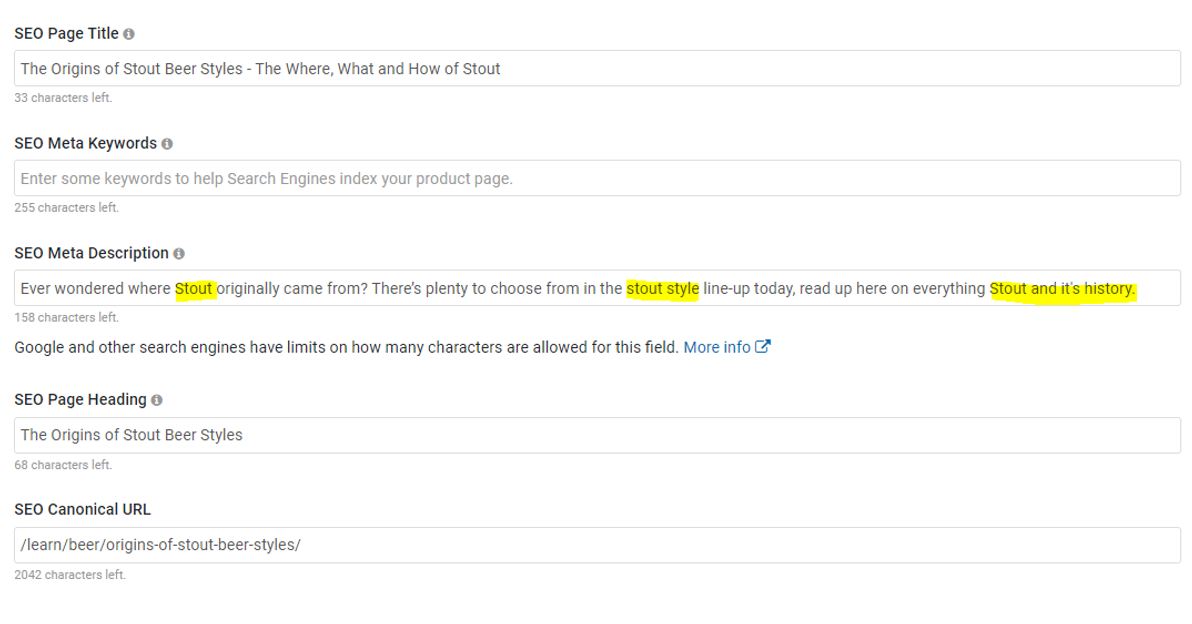Optimising Blogs for Organic Search Purposes
20 August 2021 Blog Posts
These days, blogs are often overlooked, particularly due to the surge of video content and social media marketing. However, blogging correctly still stands as a key part of Search Engine Optimisation, as it enables businesses to better target long-tail keywords which they wouldn’t otherwise rank for.Featured Snippets have also become a vital part of organic search results in recent years. Targeting the best, highly searched queries with your blog titles and/or headings, is another great way to increase your snippet presence and drive more qualified traffic to your site.
This blog covers the basics of optimising a blog for Organic Search, using the example of a Homebrew store client of ours running on the Neto platform.
1. Naming & URL Path
- Ensure you use the correct and consistent parent URL category for all your blogs such as /blog/ or /learn/ etc. All of your blogs should sit just under this parent category at the 2nd or 3rd level for example: /blog/*name of the blog*/.
- Give your blog a good name & title. This should be a longtail term that is related to your keyword research or relate to what people would ideally search as a question, query or list. In this case, the blog is an educational piece on the history of Stout style beer.
Name = “The Origins of Stout Beer”
URL path = https:// australianhomebrewing.com.au / learn / beer / origins-of-stout-beer-styles /
This blog eventually achieved our original target, which was to gain the top featured snippet for that main keyword as it appears to have decent search volume:

2. Main Body of Content:
- The H1 should also be the same as the main title of the blog. In this case, that is “The Origins of Stout Beer”, however, you should also have sub-headings within the content.
- Ensure you have a couple of headings throughout the blog piece, formatted as either h3, H3 or H4 as you move down in priority (there can be more than one of each). These sub-headings can target other related questions/queries in search, which fall under the blanket topic of the main H1. As an example here, we have used sub-styles of Stout beer to gain even more traction in Organic Search if people are searching questions for specific styles:
H3 = “What are the Key Stout Styles Today?”
H4= “Irish Stout”
H4= “American Stout”
H4= “Oatmeal Stout”
- Also, include a couple of internal links throughout the blog. These are hyperlinks with anchor text relating to the destination page, which then takes users to some of your related products or categories across the site. These internal links not only help real human users to shop from your site, but also give another entry point for search engine crawlers to re-crawl some of your other related products and pages. This helps establish an association between the blog topic and other parts of the site.
Anchor Text = “homebrew stout recipes”
Destination Link = https:// www.australianhomebrewing.com.au / beer / recipe-kits / stout-porter /

Example here: This takes users to a related product category page which they can shop products from
3. Metadata & SEO Fields:
- The Page Title (also known as Meta Description) should be the same (or similar) as the blog title and H1. Try and include a keyword variation of what people might search for alternatively, separated by “ – “ or “ | “.
- SEO Meta Keywords and Canonical URL fields in your CMS can be left blank. You would rarely need to add a Canonical for blogs considering we are trying to rank keywords with it, so it’s best to leave this field blank or alternately add a self-referring canonical.
(i.e fill the canonical field with the same URL as the blog itself).
- The Meta Description is more useful for real users than for bot crawlers, but it still impacts SEO and your ability to rank. Keep it as short as possible. The Meta Description should be a basic summary/blurb of what the blog is about.
- Think of your Meta Description as an advert, you are trying to make it engaging for users with some sort of call-to-action or intrigue to read more, this way you are incenting users to click through to your site and not a competitor. Try and include a couple of related keyword variations as well to help search engines understand what the blog is about (highlighted yellow below)

Now that you know all the tips and tricks to optimise your blogs for organic search purposes, get ready to reap the rewards!
Happy Blogging.





